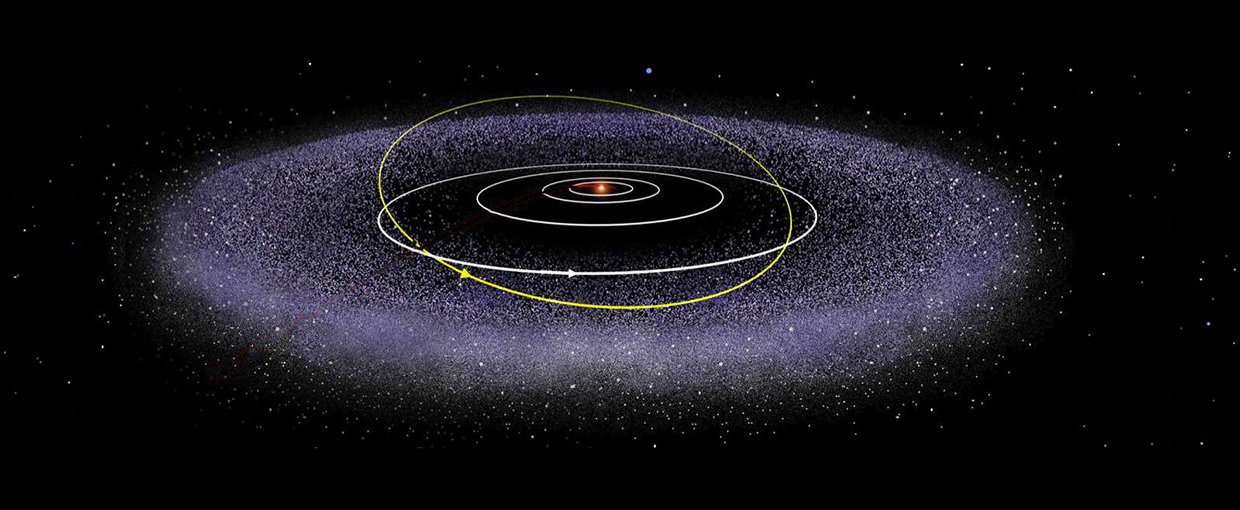
Nov. 13, 2019
Research Highlight
An Exo-Kuiper Belt in Scattered Light

The Kuiper Belt is a region of leftover material from the Solar System's early history and resembles a thick disk beyond the orbit of Neptune. Beyond the Kuiper Belt is the Oort Cloud. Both the Oort Cloud and the Kuiper Belt could be sources of comets.Image credit: NASA.
Researchers supported in part by the NASA Astrobiology Program have discovered a ring of material around the star HD 191089 that resembles our solar system’s Kuiper Belt using scattered-light images from both space- and ground-based telescopes. In addition, the team spotted a halo around the debris disk of HD 191089. Using radiative transfer modeling, the team was unable to describe a scenario that would consistently produce the observed structure of the system, and propose that more complex models are needed to explain its formation. Data was obtained using the Hubble Space Telescope and the Gemini Planet Imager (GPI), an instrument utilized on the Gemini South Telescope in Chile.
The Solar System’s Kuiper Belt is a vast region of leftover material from the earliest period of our system’s formation. Studying the Kuiper Belt provides important insight into the history of the Solar System and can yield clues as to how the system ultimately became capable of supporting a habitable planet, the Earth. Identifying similar structures around other stellar systems provides a point of comparison, and could help astrobiologists better understand our own region of space.
The study, “An Exo–Kuiper Belt with an Extended Halo around HD 191089 in Scattered Light,” was published in The Astrophysical Journal. The work was supported by the Nexus for Exoplanet System Science (NExSS). NExSS is a NASA research coordination network supported in part by the NASA Astrobiology Program. This program element is shared between NASA’s Planetary Science Division (PSD) and the Astrophysics Division. This research is a critical part of NASA’s work to understand the Universe, advance human exploration, and inspire the next generation. As NASA’s Artemis program moves forward with human exploration of the Moon, the search for life on other worlds remains a top priority for the agency.
Additional Links:
Kuiper Belt (NASA Solar System Exploration)
10 Things to Know About the Kuiper Belt (NASA Solar System Exploration)